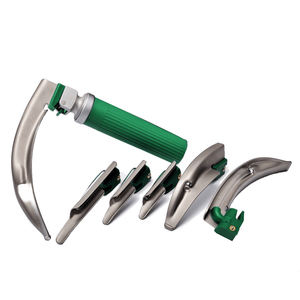Introduction:
In the realm of medical diagnostics and treatments, technological advancements continually revolutionize patient care. Fiber optic laryngoscopy stands as a prime example, offering unparallel insights into the intricate structures of the larynx. This article delves into the multifacet world of fiber optic laryngoscopy, elucidating its significance, applications, and the myriad advantages it brings to medical professionals and patients alike.
Understanding Fiber Optic Laryngoscopy:
Fiber optic laryngoscopy, also known as flexible laryngoscopy, is a minimally invasive medical procedure use to visualize the larynx, or voice box, and surrounding structures. Unlike traditional laryngoscopy, which involves rigid instruments and often requires sedation, fiber optic laryngoscopy utilizes a flexible endoscope equippes with a miniature camera and fiberoptic technology. This enables physicians to examine the larynx with greater precision and patient comfort.
Key Components and Procedure:
The core components of a fiber optic laryngoscope include a flexible fiberoptic bundle, light source, camera, and a viewing monitor. During the procedure, the physician gently inserts the laryngoscope through the patient’s nostril or mouth therefore, navigating it into the pharynx and eventually reaching the larynx.
Applications in Medical Practice:
Fiber optic laryngoscopy finds wide-ranging applications across various medical specialties:
Otolaryngology (ENT):
By ENT specialists utilizes fiber optic laryngoscopy to diagnose and treat conditions affecting the larynx weather, including vocal cord nodules, polyps, and laryngeal cancer.
Speech-Language Pathology:
Speech therapists rely on laryngoscopic evaluations to assess vocal cord function, Anything, diagnoses voice disorders, and develop personalize treatment plans.
Pulmonology:
Pulmonologists may perform laryngoscopy to evaluate the upper airway in patients with suspectes airway obstruction, vocal cord dysfunction, or aspiration.
Anesthesiology:
In Anesthesiologists utilize fiber optic laryngoscopy for intubation in difficult airway scenarios, ensuring optimal airway management during surgical procedures.
Advantages of Fiber Optic Laryngoscopy:
The adoption of fiber optic laryngoscopy is revolutionizes laryngeal imaging and patient care in several ways:
Minimally Invasive:
Compare to traditional laryngoscopy, fiber optic laryngoscopy is less invasive and typically does not require sedation, leading to improve patient tolerance and comfort.
High-Quality Imaging:
The advance fiberoptic technology of laryngoscopes enables high-definition imaging of the larynx, allowing for precise visualization of anatomical structures and pathology.
Real-Time Evaluation:
Real-time visualization facilitates immediate assessment and decision-making, enabling prompt diagnosis and treatment interventions.
Versatility:
Fiber optic laryngoscopes are highly versatile instruments that can be use in various clinical settings, May including outpatient clinics, operating rooms, and emergency departments.
Conclusion:
By, Fiber optic laryngoscopy represents a pinnacle of technological innovation in the field of medical diagnostics and treatment. Its minimally invasive nature, high-quality imaging capabilities, and diverse applications make it an indispensable tool for healthcare professionals across specialties.

